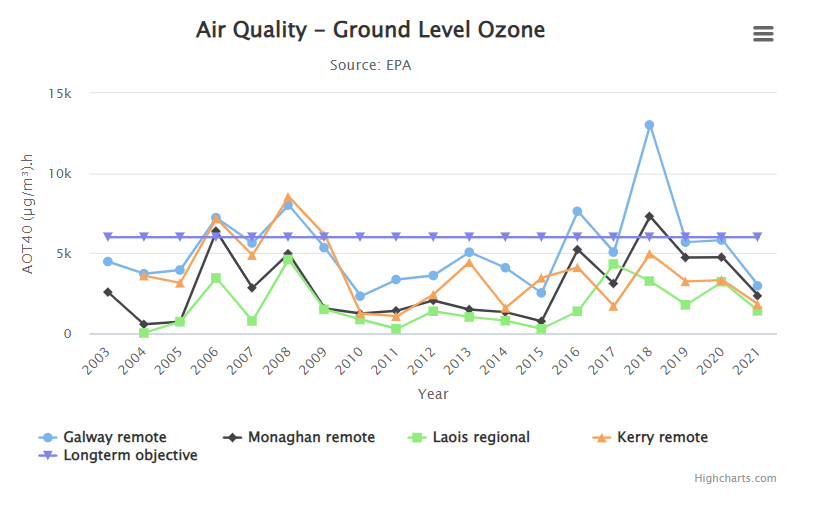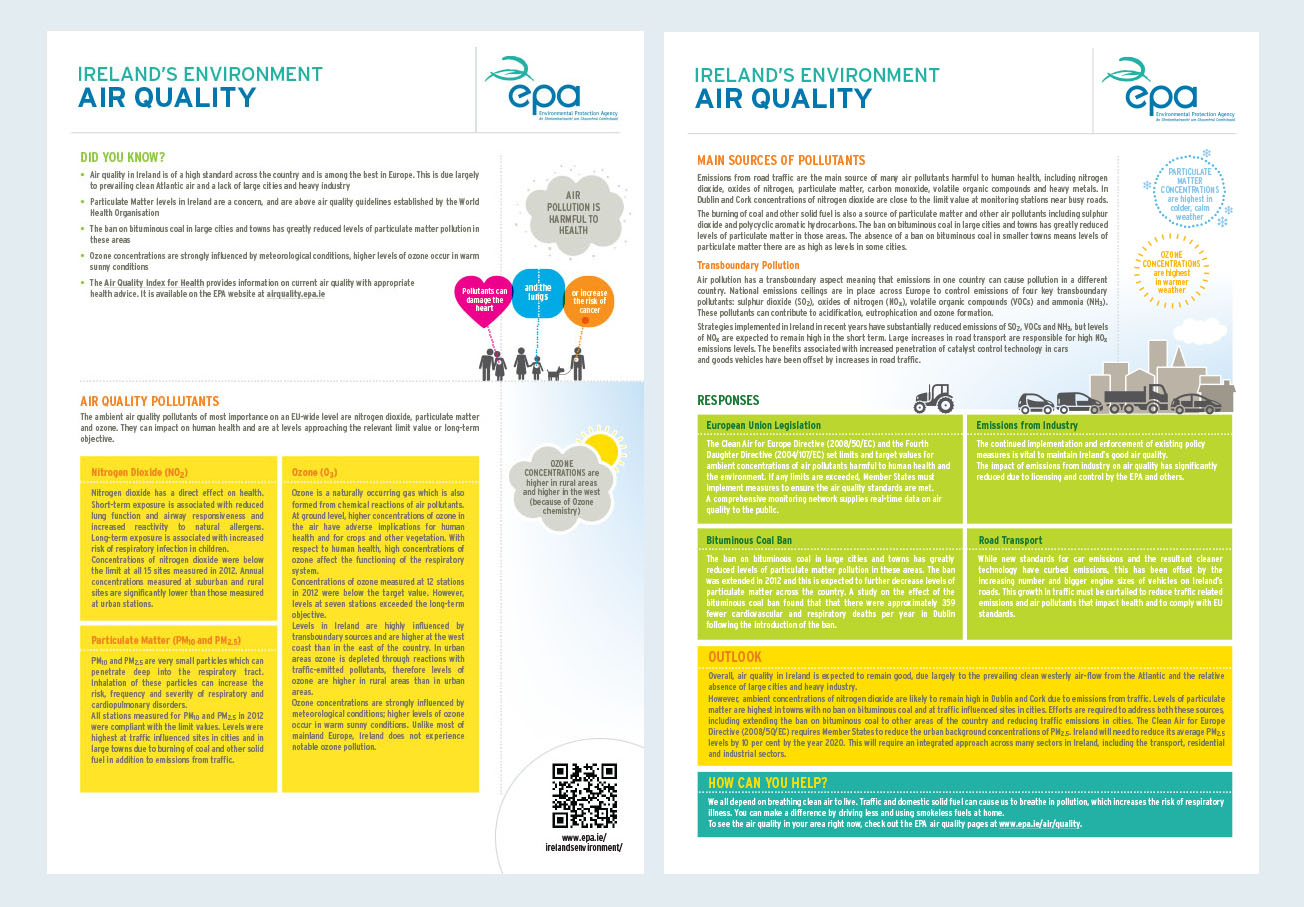The ambient air quality pollutants of most concern on an EU-wide level are nitrogen dioxide, particulate matter (PM), ground-level ozone and Polycyclic Aromatic Hydrocarbons (PAHs). They can impact on human health, ecosystems and vegetation. Monitoring is carried out to determine their concentration levels.
The main source of nitrogen oxides (NOx) in Ireland is emissions from traffic, along with electricity generating stations and industry.
Particulate matter (fine particles) can penetrate the lungs and cause health effects. PM2.5 tends to be a better signifier of man-made pollution (including domestic solid fuel burning, diesel-fuelled vehicle emissions), whereas PM10 can have a greater contribution from natural sources (such as sea salt and wind-blown dust).
Levels of ozone in Ireland are highly influenced by transboundary sources. Though low in comparison with levels in mainland Europe, levels of ozone are higher in rural areas across Ireland than in urban areas.
PAHs are organic compounds predominantly originating from solid fuel burning, particularly wood burning and, to a lesser extent, vehicle emissions.
Learn more about current trends on air quality
- Nitrogen oxides (N0x)
- Particulate matter (PM10 and PM2.5)
- Polycyclic Aromatic Hydrocarbons (PAHs)
- Ground Level Ozone (O3)
- Dioxins and PCBs
- European air quality trends











